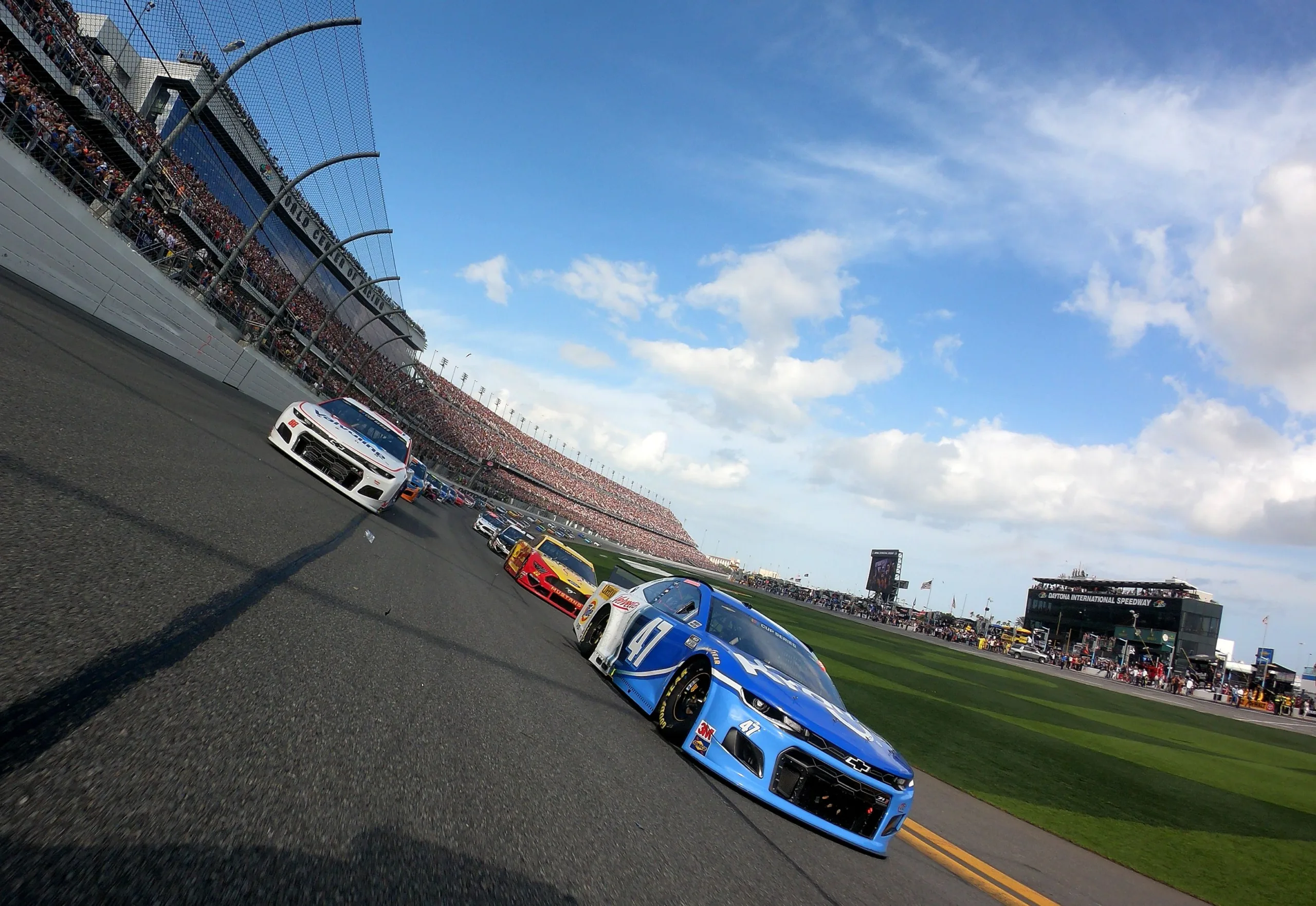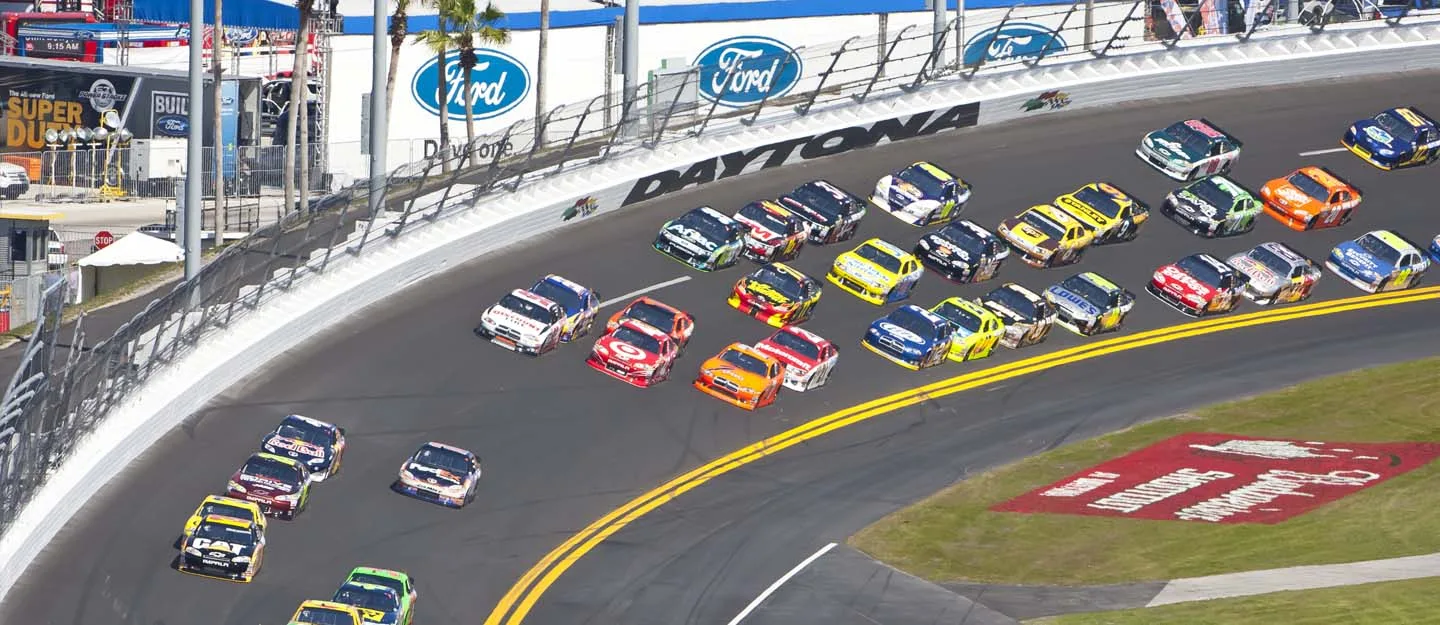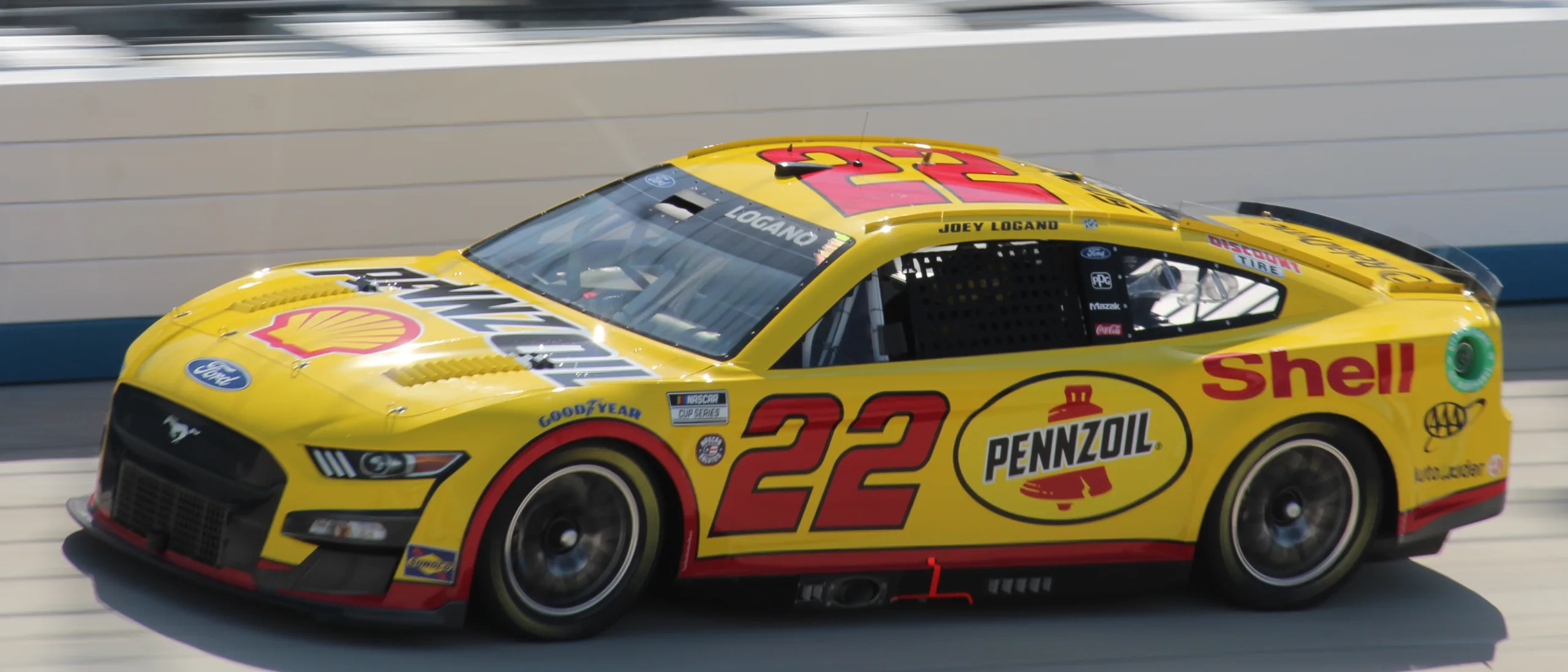NASCAR, short for the National Association for Stock Car Auto Racing, ranks among America’s most popular and thrilling spectator sports. It features drivers racing modified production cars at exceptionally high speeds around oval-shaped tracks. But have you ever wondered why NASCAR cars consistently turn left? Why don’t they make right turns or race on tracks with different shapes?
The answer to this question isn’t straightforward, as numerous factors dictate the direction in which NASCAR cars travel. In this article, we will delve into these factors, including track design, car setup, and driving techniques, and examine their impact on the physics, engineering, and skill involved in NASCAR racing.
Why do NASCAR cars go left?
NASCAR races are held on oval or tri-oval tracks, which require drivers to steer predominantly to the left. This tradition has its roots in the early days of auto racing in America, where tracks were designed this way to keep the spectators on the inside of the track, making the race easier to watch. The left-hand turn design also allows drivers to keep their right hand closer to the center of the car where the gear shifter is located, making it easier to change gears during the race. Over time, these left turning tracks have become a unique characteristic of American oval track racing, setting it apart from road racing or other forms of motorsport.

The design of NASCAR vehicles is heavily influenced by the leftward direction of the races. Their bodies and suspensions are asymmetrical, optimizing them for making left turns at high speeds. The continuous left-turn racing has led to numerous engineering and design adaptations to combat the centrifugal forces that try to push the car outward from the track as they zoom around. Additionally, drivers also become highly skilled at steering through left-hand turns, making split-second adjustments to maintain control and speed while jockeying for position. The left-turn tradition in NASCAR is not only a distinctive feature but a testament to a long history of engineering and driving skill development in the sport.
Track design
One of the most evident determinants of why NASCAR cars turn left is the configuration of the tracks themselves. Most NASCAR tracks adopt an oval shape, characterized by two lengthy straightaways connected by two curved turns. These turns invariably bend to the left, necessitating constant changes in the car’s direction from straight ahead to the left.
To assist cars in navigating these left turns at high speeds, the tracks are banked. Banking refers to the track being higher on the outer edge than on the inner edge, creating an angle between the track surface and the horizontal plane. This angle generates a force component that pushes the car toward the center of the turn. Consequently, this force reduces the requirement for excessive friction between the tires and the track surface to prevent the car from sliding outward. In simpler terms, the banking helps the car stay on the track and maintain its speed while making left turns.

The size and shape of NASCAR tracks vary depending on their location and history. Some tracks are shorter than others, resulting in tighter turns and more laps. Additionally, the degree of banking differs among tracks, affecting the steepness of the turns and the speed of the race. For instance, Martinsville Speedway in Virginia ranks as one of the shortest tracks in NASCAR, boasting a mere 0.526-mile length and a banking angle of 12 degrees. Conversely, Talladega Superspeedway in Alabama stands as one of NASCAR’s longest tracks, measuring 2.66 miles in length with a banking angle of 33 degrees.
Car setup
Another influential factor in the leftward trajectory of NASCAR cars is the setup of these vehicles. Unlike regular production cars, which are designed for symmetry and balance under typical driving conditions, NASCAR cars are intentionally made asymmetric and optimized for left turns. This entails various adjustments and modifications to different components of the car to enhance its performance and handling during left turns.

Here are some examples of car components that impact its direction:
1. Tires:
Tires provide traction and control on the track surface, so they play a crucial role. They have different amounts of air in them, depending on where they are in the car. Right-side tires usually have more inflation than left-side tires, because they carry a heavier load and wear more while making left turns. Also, the position of the tires on the car affects their alignment. The right-front tire usually points slightly outward, while the left-front tire often points slightly inward. This creates a toe-in effect, which makes steering leftward easier.
2. Suspension:
The car’s suspension is another vital component responsible for stability and comfort on bumpy surfaces. The track’s banking requires different adjustments for suspension heights, based on their position on the car. The right-side suspension is usually higher than the left-side suspension. Suspension stiffness also varies among positions on the car, with the right-front suspension being stiffer than the left-front suspension to resist roll and dive during left turns.
3. Weight distribution:
Weight distribution significantly impacts the car’s balance and center of gravity. Distribution of weight different on the car’s sides, typically favoring the right side to generate more downforce and grip during left turns. Weight distribution also varies between the front and rear ends, with more weight added to the rear to prevent oversteering and spinning during left turns.
4. Aerodynamics:
Drag and lift forces affect the car’s performance, so aerodynamics plays a critical role. Different shapes are customized to car aerodynamics, based on their position on the car. A wedge shape is created by curving and angling body panels, which reduces drag and increases downforce while making left turns. Spoilers and splitters are also added or adjusted to enhance downforce and stability.
The car setup isn’t a one-size-fits-all formula; it varies from race to race based on the track’s characteristics and the driver’s preferences. Different tracks demand distinct setups to accommodate their unique challenges, making ongoing testing and fine-tuning essential for NASCAR teams to find the optimal setup for each race.
Driving technique
The final factor influencing the leftward movement of NASCAR cars is the driving technique employed by the drivers themselves. Driving a NASCAR car at high speeds around an oval track is far from simple. It demands a high degree of skill, experience, and strategic thinking to navigate left turns effectively and efficiently. Drivers employ various skills and strategies to optimize their position and momentum during left turns.
Here are some examples of driving skills and strategies:
1. Speed:
Drivers must carefully adjust their speed according to track conditions and race situations. Finding the right balance between going fast enough to gain an advantage over competitors while avoiding excessive speed that could lead to losing control or wasting fuel is crucial. Precise use of the throttle and brake pedals is required for smooth acceleration and deceleration when entering and exiting turns.
2. Steering:
Steering adjustments depend on track geometry and the car’s behavior. Drivers must steer smoothly and accurately to follow the curve of the track, avoiding oversteering or understeering, which can result in loss of traction or direction. The steering wheel is utilized to fine-tune the car’s turning angle in relation to the track, influenced by speed and setup.
3. Drafting:
Drafting serves as a strategic tool for gaining speed and conserving fuel during left turns. It involves closely following another car, creating a low-pressure zone that reduces drag and increases speed. Drafting allows drivers to catch up with or pass other cars, but it comes with risks, such as reduced visibility and control.
4. Passing:
Passing is another strategy drivers use to gain position and points while making left turns. This technique involves overtaking another car by utilizing a different line or lane on the track. Passing can occur on the inside or outside of turns, contingent on available space and opportunities. Effective passing demands precise timing, skill, and cooperation.
Driving technique is not static; it adapts to the specific race conditions and competition. Different races require varying techniques to suit their stages and formats, and different competitors necessitate diverse approaches to accommodate their strengths and weaknesses. Consequently, NASCAR drivers must continuously adapt and refine their techniques to determine the most effective way to navigate left turns.
Conclusion
In summary, NASCAR cars predominantly turn left due to a combination of factors, including track design, car setup, and driving technique. These factors collectively influence the physics, engineering, and skill behind NASCAR racing, making it a complex and exhilarating sport. If you’re interested in delving further into the reasons why NASCAR cars turn left, you can watch races online, visit tracks in person, or explore books and articles that provide a more in-depth look at the science behind NASCAR racing.
